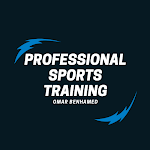Functional Training Handbook PDF
The inspiration for the Functional Training Handbook came about as a result of the renaissance occurring in rehabilitation and training.
We are recognizing the overlapping roles and interdependence of clinicians, trainers, and coaches (see Chapter 3).
Corrective exercise and functional training have become popular buzzwords.
The book aims to distinguish what is functional about functional training from what is merely popular.
With the Internet and social media falsely granting instant expert status on anyone with a loud bullhorn, this book will hopefully give you an ear to what experts with years in the trenches have to say.
Let us start with what functional training is not. It is not sport-specific training which through mimicry trains movement patterns that are replicas of sports maneuvers.
Nor is it training on unstable surfaces to “simulate” realworld unpredictability.
What is functional training? It is training with a purpose or goal. By having a clear objective it is inherently client-, athlete-, or patient-centered. Why? Because functional training is designed to help people achieve their goals safely and efficiently.
If we think about or try to define function, the answer becomes “it depends.” What is functional depends on an individual’s age, sport, injury history, stage of rehabilitation, goals, etc.
To many saying “it depends” is a cop-out, but to assume that everyone needs the same tests or exercises is to imagine a world where all people are identical in their physical needs.
In fact, we are all unique so what is functional truly depends.
An elderly person may have a high risk for a fall; thus, balance assessment and training would be a functional priority.
Women are at risk post-menopausally for osteoporosis; therefore, spinal posture is a key. Young girls and female athletes in sports such as soccer, basketball, or volleyball with sudden starting and stopping and change of direction are at heightened risk for non-contract anterior cruciate ligament injuries so factors which predispose to this (see Chapter 31) should be screened for and addressed.
Low back pain is ubiquitous and often follows from improper bending and lifting habits, inadequate lower quarter mobility, or poor motor control of the core; thus, assessing and remediating these key functional deficits are crucial.
Individuality is the rule, not the exception. Clearly, populations have heterogenous rather than homogenous functional requirements.
Functional training for a basketball player may require an abundance of fronta plane stability and power work (see Chapters 9 and 26).
For a weight lifter it may focus on control of the sagittal plane (see Chapter 16).
Meanwhile for a mixed martial arts fighter training will focus on building their rate of force development (see Chapter 28), something which is clearly also of importance in other sports such as baseball, football, sprinting, weight lifting, etc.
In contrast, an endurance athlete such as a marathon runner, Iron Man competitor, or triathlete will focus on such traits as running economy (see Chapter 34).
The Functional Training Handbook aims to “bridge the gap” between rehabilitation, training, and coaching. Rehab specialists have learned to successfully help patients resume activity and athletes to return to sport.
Trainers have learned how to enhance fitness in the general public while their Strength & Conditioning colleagues are able to prepare athletes for the rigorous demands of their sport.
If trainers successfully build capacity (strength, endurance, and power) on a foundation of high-quality movement patterns, then skill coaches can focus on biomechanical optimization of the craft of sprinting, kicking, throwing, striking, etc.
Most importantly the head coach is now in a position to macro- instead of micro-manage the overall performance aspects of the athlete and team.
When the coach can focus on motivating and inspiring each individual on the team to maximize their potential, the most efficient development of the athlete can occur.
Perhaps the most important component of this book is its underlying emphasis on durability. If training is functional, then it will always be as hard as possible, but not harder.
Thus, residual adaptation will occur and results will be achieved in the fastest, safest manner possible to develop athleticism throughout the lifespan, during the off-season, and even maintain it in-season (see Chapter 34).
This process is always guided by a results-oriented approach (see Chapter 5) called the clinical audit process (CAP).
Often described as an assessment-correction-reassessment approach the key is that as the famed Czech Neurologist Dr. Karel Lewit says “the methods should serve the goals.”
The CAP involves a rigorous assessment (see Chapters 6 and 22) to find the “weak link.” This is the painless dysfunction that is most greatly limiting function in the kinetic chain.
Put in other words it is the source of biomechanical overload in the kinetic chain. Once this is identified then a program can be designed that “resets” function so that the painless dysfunction is remediated (see Chapter 7) and performance enhanced in the most efficient manner possible (see Chapter 35).
The Functional Training Handbook strives to free clinicians and trainers from being “prisoners of protocols.”
Results or outcomes should always trump an output-based approach that blindly follows methods (i.e., “no pain no gain”).
In this way, it is my hope that this book will serve as a guide to making rehabilitation, fitness, and athletic development specialists more than just craftsman, but true artists.


Post a Comment